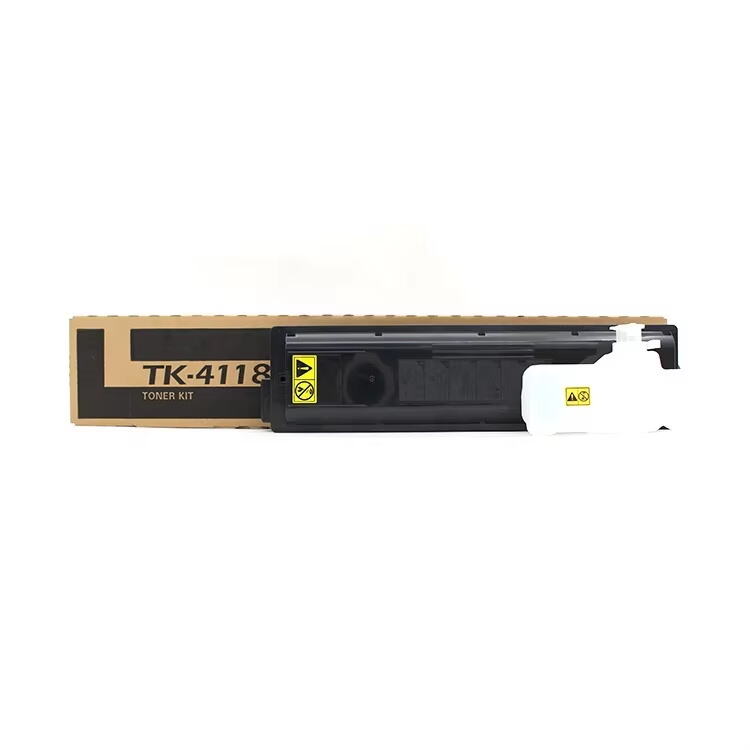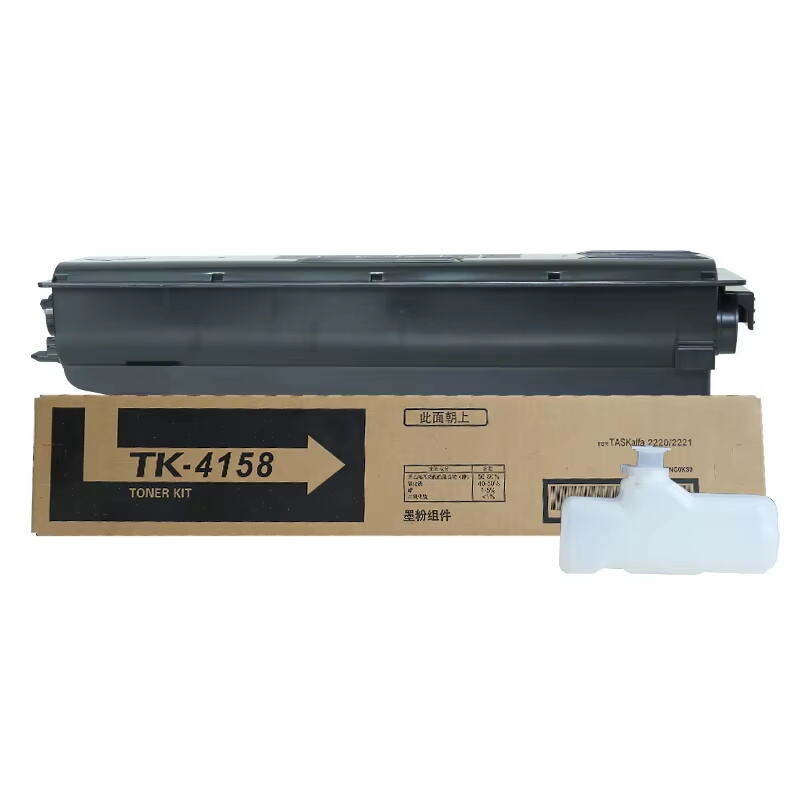Proper Storage Techniques for Toner Cartridges
Ideal Temperature and Humidity Conditions
And Properly storing toner Cartridges can keep their good quality Works Great ! In order to do so, it's important to keep them in a dry area with a relative humidity of 20 to 80%. B: Toner cartridges should be kept at an ambient temperature, between 20 to 25 degree Celsius is best, excessive temperature can cause toner to degrade. And watch that humidity -- it can eventually affect the toner quality if it’s not at the levels it should be.” A hygrometer and thermometer to track those conditions and keep them consistent may be useful in keeping the toner fresh over time. It will minimize things like toner clumping and other related phenomena, while helping to maintain the life of the cartridges as they’re used.
Avoiding Sunlight and Heat Exposure
2) It is very important to protect toner cartridges from direct sunlight and also extremely hot temperatures in order to prolong the life of the cartridges. Direct Sunlight will melt the toner and ruin the toner cartridge and/or print. So, it is a good idea to keep toner cartridges in a dark place as well to preserve them. Also, storage should be at least one meter away from heating vents or appliances to prevent overheating, which can damage cartridges. By following these measures, you will keep your toner cartridges in a top shape, and not face any glitches in printing next time.
Additional Considerations
If your business has massive quantities of toner, or if you've got huge fluctuations in the climate, you might want to consider something more specially designed for toner storage. These steps can further stabilise things and safeguard your precious printing materials. If in long-term storage, regularly turn over the stock so that the toner does not settle. These strategies are necessary to keep the printers working effectively and make the toner cartridges last longer.
Correct Handling and Installation Practices
Shaking Toner Cartridges Before Use
Shaking toner cartridges all is needed for evenly distrubion of toner before install them, which leads to the excellent printing performance. This is a basic measure to avoid rust and clumping, a problem that frequently arises when cartridges sit unused for long periods. Shaking promotes efficient toner recycling to deliver cost-effective printing that does not compromise quality.
Safe Installation Steps to Prevent Damage
It is important to do so in a manner that does not compromise either print quality or device function by providing safety within the installing process of toner cartridges. It is recommended to use gloves to avoid fingerprints on the sensitive parts that can have an effect on the print quality. It is better that you carefully follow the manufacturer’s directions, so that there is an appropriate installation. Easy to Use:Pre-installed chip,just ensure the printer is turned off before installing or removing your cartridge to prevent any damage to yor printer and guarantee a safe operatin.
Avoiding Touching Sensitive Components
Be careful with toner cartridges You should avoid touching say sensitive pieces (the imaging drum) or any circuitry. These components are prone to wear and tear and can significantly affect print quality. The use of a tool or the use of clean/dry gloves is recommended to help organize and help install cartridges without risk of damaging so that the process is smooth and sterile. It is very important to take precautions when handling to ensure the cartridges lifespan and the quality of prints.

Optimizing Printer Settings for Toner Efficiency
Using Draft Mode for Routine Documents
For everyday documents, opt for draft mode to save on some toner. This environment is most conducive to internal communications when you don't require high quality prints so you can save on your toner. When you enable draft mode, you can conserve resources without sacrificing how you view the documents you need the most. Adopting this setting will not only be useful in controlling the toner usage in an efficient manner, but it will also result in cost- savings in the long run.
Switching to Grayscale Printing When Possible
Using black and white prints may help you at least save color toner so you don't have to replace your cartridge as often. The Economy mode setting is another way to save on ink, and in most situations will make the final product crisp and easily readable - more than good enough for most daily printing needs. The possibility of grayscale printing, in particular, has the great advantage of focusing the attention on black-and-white prints, with consequent less reliance on color cartridges and a possible overall reduction of printing costs.
Adjusting Resolution to Reduce Toner Consumption
Reducing print resolution is an alternative but practical way to reduce toner consumption, at least for less critical documents where details are not crucial. By trying out various resolutions, a happy medium can be found between excessive toner use and print quality. This will enable you to customize your printer settings based on the requirements of each print job, ensuring that you are maximizing your toner usage strategically without compromising on readability.
Regular Cleaning and Maintenance Routines
Cleaning Cartridge Contacts and Printer Components
Keeping the cartridge contacts clean is an essential aspect of printer maintenance to avoid connectivity issues. A regular cleaning of the contacts through a lint-free, soft cloth helps ensure the toner cartridge and printer communicate effectively, resulting in optimal print quality. Also, one must not forget to clear out other components of printer including the paper holders and rollers. Dust and dirt may come in and disrupt the print operation. Regular cleaning helps the printer to last longer and print smoothly.
Managing Toner Dust Build-Up
Clogged toner dust is a general phenomenon, if you do not deal with it, it will affect the printing effect. Frequent vacuuming of the toner allows one to offset these issues and keep the printer running smoothly. Cleaning tools Should not damage machine parts Authorized by the manufacturer Use manufacturer recommended cleaning tools May damage machine parts. Many toner vacuums have particle filters suitable for adsorbing small toner particles, while standard vacuums can spread toner particles into the air, making the already existing problem even worse. Proper use of these tools prevents damage to printer parts and extends the working life of the devices.
Performing Printer Calibration
Frequent # printer calibration is crucial for accurate and consistent # colour output and to help manage toner distribution and ultimately deliver better print quality. This regular recalibration syncs the printer’s settings so it can consistently produce the most accurate colors and tone down toner usage. Not only is calibration important going into colour prints, but it also ensures flawless functioning for the printer. Calibration For best results, the calibration process should be followed according to the instructions provided by the manufacturer. This feature helps to maintain high-quality prints as well as saving on toner.
Smart Printing Habits to Conserve Toner
Embracing Double-Sided Printing
Double sided printing is a great way to use paper efficiently and save on your supply costs. Double sided double sided Double sided printing can drastically cut paper costs but costs can also be saved on your business cards. Not only does encouraging staff to do this increase both energy and saving but is in line with environmental values. Adopting this practice at an organizational level can lead to significant savings in the long run.
Avoiding Unnecessary Prints and Utilizing Digital Options
Cultivating habits of digital paper use is fundamental to cut down on unneeded prints. Not only can offices greatly reduce toner usage and rid themselves of excess paper by transitioning to electronic documentation and promoting digital over hard copy reviews. When you build policies that favour digital workflows it creates an atmosphere in which electronic is the good option, and that is better for both the environment and the budget.
Using Toner-Efficient Fonts and Layouts
Toner efficient fonts and white-space maximizing layouts are easy techniques for saving on toner. Fonts like Ecofont and Century Gothic are also ink-friendly options, and you’d be surprised at how much less toner you’ll use. Also, white space intensive designs help lower toner consumption of the page as a whole. There are easy ways to implement these in everyday use and they present a simple but smart approach to saving toner cartridges.
Recognizing When to Replace Your Toner Cartridge
Monitoring Print Quality for Replacement Cues
You need to know when you need to change your toner and when it is necessary to replace the toner cartridge to get the best printing results. Symptoms like faint prints or frequent paper jams could mean you’re running low on toner – or the cartridge is nearly empty. If you're out of the printed ink supply, that last one won't be high.Intelligence implies paying attention to red flags so that you act before the last.Search instead for: Print UXCluesYou can always count on your office printer to give you the fire signals even as it stops printing. These signs help avoid frustration and keep things running smoothly.
Proper Disposal and Recycling of Used Cartridges
Disposing of toner cartridges and recycling them in an environmentally friendly way is important. Recycling options: Many manufacturers have programs to recycle used cartridges that can help you recycle them effectively and lessen their impact on the environment. And be sure to follow your local recycling rules for disposing of toner cartridges to help reduce waste. Some of them (and it’s worth checking if yours is included) have manufacturer return programs that are environmentally friendly, and can occasionally come with perks like discounts on future purchases.
FAQ
How do I know if my toner cartridge is stored correctly?
Ensure the toner is stored in a dry area with 20%-80% relative humidity and a temperature between 68°F to 77°F (20°C to 25°C). Use hygrometers and thermometers for monitoring.
Can shaking a toner cartridge damage it?
Gently shaking the cartridge is recommended to evenly distribute toner, preventing issues like clumping and optimizing print quality.
What are the benefits of using draft mode?
Draft mode conserves toner by reducing print quality slightly, ideal for non-essential documents, saving toner, and reducing costs.
What precautions should I take when installing a toner cartridge?
Wear gloves to avoid fingerprint contamination, turn off the printer before installation, and ensure proper alignment by adhering to the manufacturer's guidelines.

